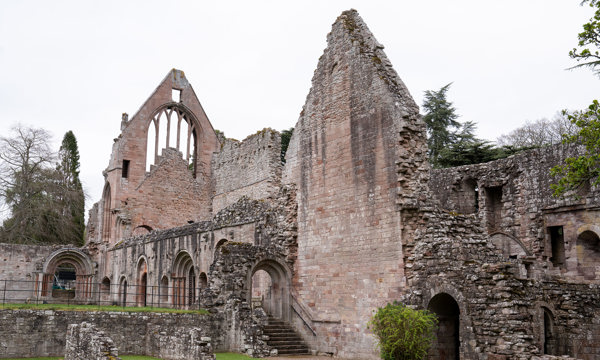Historic Environment Scotland (HES) has announced that all internal areas of Dryburgh Abbey will reopen today (Wednesday 14 June), with visitors once again being able to explore the Gothic church and 13th century chapter house.
Dryburgh Abbey was established by Premonstratensian canons from Northumberland in 1150. It was one of six Scottish houses of the order, alongside Whithorn Priory. Today, both the spiritual and domestic houses of the canons remain largely complete, and the site still exudes peace and tranquility.
After the Protestant Reformation in 1560, monastic life ended at Dryburgh Abbey, but the site gained new life in the 1700s. David Erskine, 11th Earl of Buchan and chief founder of the Society of Antiquaries of Scotland, bought the site and created a charming landscape around the ancient abbey. He was laid to rest on the property in 1829. Sir Walter Scott, the famed novelist, was a close friend of Buchan, and he was also buried here, in the north transept of the abbey.
While some areas of the site have been accessible to visitors since June last year, including the grounds and the abbey nave, visitors will now be able to explore all internal areas of the abbey, including the historic chapter house.
Access restrictions were put in place last year as a safety precaution while HES, who manages the site, introduced new measures to manage the impact of climate change on its heritage assets, an issue which is affecting heritage owners globally. Dryburgh Abbey is the latest of a series of sites where access has been reinstated or increased following inspections and necessary repairs to the masonry.
The High-Level Masonry Programme, which is the result of ongoing risk assessment and sample surveys, assesses the impact of climate change on sites as well as the scale of deterioration caused by a number of other factors, including the materials used in the building’s construction, its age and physical location. Whilst this is not an issue unique to Scotland, HES is believed to be amongst the first heritage managers to approach it in this way, with the results shared with peer organisations.
Craig Mearns, Director for Operations at HES, said:
“Dryburgh Abbey has a rich religious history and is perhaps most famously known as the final resting place of one of Scotland’s most famous literary writers. We are delighted to be able to reopen the interiors of the site once again to the public, where they can take in the beautiful architecture, explore the relics of the abbey, and learn about Scottish history as it happened.”
Dryburgh Abbey will be open daily from 9.30am to 5.30pm, with last admissions at 5pm. Visitors are encouraged to book before visiting.
About Historic Environment Scotland (HES)
- We are the lead public body charged with caring for, protecting, and promoting the historic environment. We will lead on delivering Scotland’s first strategy for the historic environment, Our Place in Time.
- Historic Scotland, Scran, Canmore, The National Collection of Aerial Photography (NCAP), The Engine Shed, Stirling Castle, and Edinburgh Castle are sub-brands of HES.
- View our press pack and keep up to date by registering for media release email alerts. If you wish to unsubscribe, please contact us.
Follow Historic Environment Scotland
Twitter: @HistEnvScot | @welovehistory
Facebook: @HistoricEnvScotland | @VisitHistoricScotland
Instagram: @HistEnvScot | @historicscotland
For further information, please contact:
Robin Kepple
Historic Environment Scotland Media Office
07721 959 962
communications@hes.scot

